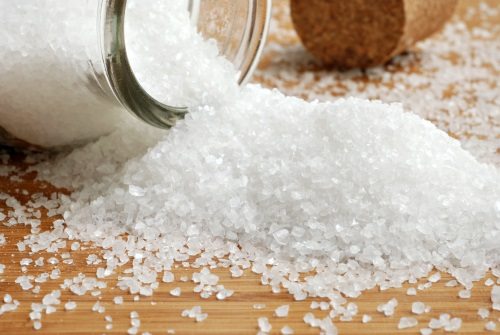The US Food and Drug Administration issued draft guidance for public comment that provides practical, voluntary sodium reduction targets for the food industry.
Average sodium intake in the US is approximately 3,400 mg/day.
The draft short-term (two-year) and long-term (10-year) voluntary targets for industry are intended to help the American public gradually reduce sodium intake to 2,300 mg per day, a level recommended by experts and scientific evidence.
The targets are also intended to complement many existing efforts by food manufacturers, restaurants, and food service operations to reduce sodium in foods.
Consumers in the US take almost 50% more sodium than what most experts recommend.
One in three individuals has high blood pressure, which has been linked to diets high in sodium and is a major risk factor cause of heart disease and stroke.
That number climbs to one in two African Americans and even includes one in 10 children aged 8-17.
While a majority of Americans reports watching or trying to reduce added salt in their diets, the deck has been stacked against them.
The majority of sodium intake comes from processed and prepared foods, not the salt shaker.
The science supporting the relationship between sodium reduction and health is clear: When sodium intake increases, blood pressure increases, and high blood pressure is a major risk factor for heart disease and stroke – two leading causes of death in the U.S.
CDC has compiled a number of key studies, which continue to support the benefits of sodium reduction in lowering blood pressure.
In some of these studies, researchers have estimated lowering US sodium intake by about 40% over the next decade could save 500,000 lives and nearly US$100 billion in healthcare costs.
“Many Americans want to reduce sodium in their diets, but that’s hard to do when much of it is in everyday products we buy in stores and restaurants,” Health & Human Services secretary Sylvia Burwell said.
“Today’s announcement is about putting power back in the hands of consumers, so that they can better control how much salt is in the food they eat and improve their health.”
The FDA is especially encouraging adoption by food manufacturers whose products make up a significant portion of national sales in one or more categories and restaurant chains that are national and regional in scope.
The FDA estimates that less than 10% of packaged foods account for more than 80% of sales. According to the USDA’s Economic Research Service, about 50% of every food dollar goes to food consumed outside the home.
Therefore the draft voluntary guidance also covers common foods served in restaurants and other food service establishments.
Included in the draft guidance is a common system for defining and measuring progress on reducing sodium in the US food supply.
The approach is to establish reasonable, voluntary reduction targets for the majority of processed and prepared foods, placing foods in nearly 150 categories from bakery products to soups.
The draft targets factor in data on consumer preferences, as well as current industry efforts to reduce sodium.
The FDA is confident that the short-term targets, which seek to decrease sodium intake to about 3,000 mg per day, are readily achievable.
In fact, many foods, such as top-selling pretzel products, have already met the short-term target.
The FDA has proposed a national, practical, gradual, and voluntary approach to sodium reduction and is sharing it as a draft for public comment.
The FDA’s draft guidance proposes feasible reductions across a broad range of food categories with high and moderate amounts of sodium.
This approach is expected to achieve significant reductions in sodium while providing flexibility for industry and more choices for consumers.










